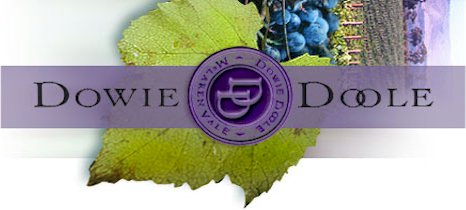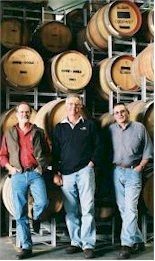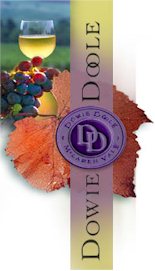


Seeing their grapes being trucked away to other wineries and frustrated at not being in control of their fruit from that point, the two opened a bottle of red wine over breakfast and decided then to form a partnership, the purpose of which was to take charge of all aspects of growing grapes, making, bottling and selling their own wine.

Enlisting the help of another friend, wine marketer Leigh Gilligan, to write a business plan, cajoling legendary local winemaker Brian Light into making the wine and briefing renowned designer Barrie Tucker to create a label – the fledgling Dowie Doole wine business was formed in late 1995.
As wine writer Huon Hooke so aptly put it – "not even the most coke addled advertising executive could have come up with the name Dowie Doole, but this name now enjoys a growing reputation in Australia and overseas as a consistently excellent producer of Chenin Blanc, Merlot, Cabernet Sauvignon and Shiraz".
Committed to growing and making classic regional McLaren Vale wines, Dowie Doole utilise predominantly estate-grown fruit which is crushed, fermented, and matured at Boar’s Rock winery in McLaren Vale under Brian Light’s guidance. Leigh Gilligan, who joined as a partner in 1998, now manages the day-to-day operations, while Norm Doole oversees the Norjan vineyard in the heart of McLaren Vale and Drew Dowie’s wife Lulu Lunn takes care of viticultural operations at Tintookie Vineyard in the hills above McLaren Vale at Blewitt Springs.

The source Tintookie Vineyard, owned by Drew Dowie and Lulu Lunn is situated 12 km north-east of McLaren Vale, close to the southern Mount Lofty Ranges, the property is medium to steeply sloping to both the east and west. At 16.6 hectares the site lies at 180-200 metres above sea level, colder and wetter than the floor of the valley in winter and cooler in summer. Chardonnay, Cabernet Sauvignon, Merlot, Shiraz and Chenin Blanc vines are grown to sand over reddish semi-porous clay with ironstone pebbles throughout.
The Norjan Vineyard owned and operated by Norm and Jane Doole was acquired in 1993, the property is located 3km west of the township of McLaren Vale on gently undulating land which was the site of one of South Australia’s earliest plantings of wine grapes. An area of 26.3 hectares at a lowly 55-65 metres above sea level grows Shiraz, Merlot, Cabernet Sauvignon, Chardonnay, Pinot Noir, Semillon and Sauvignon Blanc planted to sandy loam over limestone. The climes here are very mediterranean, coastal sea breezes, dry summers with warm days and cool nights.
The ancient Bell's Block and Old Rifle Range site belongs to Leigh and Jen Gilligan. Planted sometime in the 1920s Bell's Block is located just off Oakley Road, nestled in the heart of McLaren Flat township. At 55 metres above sea level, a precious 2.46 hectares of Grenache vines are grown to a mediterranean climate of coastal, sea breezes, dry summers with warm days and cool nights, atop free draining, sandy loams over clay. Old Rifle Range is situated in the foothills to the south of the township of McLaren Vale. Four hectares of Shiraz vines are planted to well drained, low-vigour clay-loams impregnated with limestone and some ironstone on the lower slopes. Another low altitude Mediterranean climed vineyard, north facing with a natural and gentle slope.
